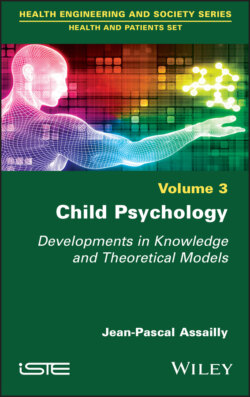Читать книгу Child Psychology - Jean-Pascal Assailly - Страница 36
1.5.1. The phylogenesis of childhood
ОглавлениеLike other primates, young humans are dependent on others for long periods after weaning and exhibit a unique life history stage called infancy. Follow-up fossil evidence such as the eruption of the first, second and third molars suggests that the duration of this stage of life history has more than doubled over the past 4 million years.
This lengthening and dependence are at the heart of hominization2, the concept of “neoteny” describes this immaturity at birth of the human baby compared to other species, but it is precisely this immaturity that will allow the development of specifically human characteristics. For example, the infant chimpanzee dominates the infant human in the first months of life in all types of tasks and tests, then progressively, this ratio will reverse.
The length of childhood will allow the human child to acquire an enormous amount of information, directly through its own observations and actions, as well as indirectly through a complex cultural transmission. Moreover, human populations, having colonized the entire planet, live in very different geographical, climatic and social environments, hence the concept of “adaptive phenotypic plasticity” which describes the capacity of an organism to adapt its development to environmental conditions (Amir and McAuliffe 2020).
Adaptation for the individual will consist of developing phenotypes that are suitable to environmental conditions from the start of life; variations in behaviors will result from the responses to the different socioecological indices.
An empirical and developmental example of this type of prediction is that a child’s neighborhood hardship enables his or her prosocial behavior to be predicted in an experimental game: children living in difficult, low-income neighborhoods exhibit less prosocial behavior toward strangers than children in less difficult, higher-income neighborhoods. These patterns mirror those observed among adults living in similar economic conditions (Safra and Tecu 2016).
Development during childhood is a period of heightened sensitivity to environmental indices and developmental research in this area tends to exploit variations in these indices as natural experiments to determine downstream behavioral consequences.
A different, but largely compatible, perspective is that derived from “culture-gene coevolution” theory: like adaptive phenotypic plasticity, this approach also offers a rich perspective on child development, but focuses relatively more on the role of cultural transmission in early childhood (Amir and McAuliffe 2020).
This approach draws on the social learning model and focuses on the variation of cultural norms and their internalization as a driving force for behavioral variation across societies; cultural norms are behavioral heuristics that individuals tend to follow when: (1) a sufficiently large number of community members conform to them – the so-called “empirical expectation” (descriptive norms) – and (2) a sufficiently large number of community members expect the individual to conform, also called “normative expectation” (injunctive norms).
Initial propensities for social learning are likely to be equivalent in all populations, and these shared propensities then interact with varying cultural norms across societies to produce variations in behavior. Cross-cultural work distinguishes the characteristics of our psychology and behavior that are sensitive to cultural input in varying degrees.
In contrast to the concept of universality, which assumes that a phenomenon would be observed everywhere in the world, cross-cultural developmental psychology advances the concept of regularity (Rogoff 2003), to track and measure the regularities of child behaviors and developmental trajectories in various environments.
For example, the rejection of an allowance when they receive more than another person seems to appear with some regularity in children in different societies, which does not irrevocably demonstrate that the aversion to having more than another person is universal, but the regularity of its occurrence may lead to new research questions. For example, can the roots of this form of aversion be traced phylogenetically? Can formal models of cooperative interactions foster inequity aversion? Thus, cross-cultural developmental studies can contribute to broader theoretical and evolutionary debates about human behavior (Amir and McAuliffe 2020).
